Foreward
Among the most impressive facilities in Canada, TPC Toronto at Osprey Valley is a sprawling tribute to Doug Carrick’s resume and golf in Canada alike. After all, it is the only facility in Canada to have three Top 100 golf courses—No. 54 Hoot, No. 57 Heathlands, and No. 78 North (pre-reno, for clarity)—while hosting numerous events between the North and Heathlands, and a spacious practice facility. Yet, the accolades and near cult-classic status among Greater Toronto Area golfers didn’t stop the facility from tackling a large expansion and improvement plan: that included a new clubhouse overlooking the North’s 18th green, a revamped practice facility, a pending clubhouse for Heathlands, Golf Canada’s move to the facility near the 13th tee on the North, and renovations to the North course with eyes of being a suitable tournament venue for all levels of play. That includes the 2025 RBC Canadian Open (+ future considerations), and the 2024 Fortinet Cup on the PGA TOUR Americas schedule.
Originally designed by Doug Carrick in 2001 as the third addition to the resort following Heathlands in 1990 and Hoot in 2001, North is primarily a big, bold, and spacious golf course. It was always the longest of the lot, with the biggest greens, widest fairways, and deep bunkers (those who hit it in the greenside bunkers on the 2nd or 12th can attest). In order to host high-level golf tournaments, though, it needed to be stiffer. In doing so, the facility consulted original architect Doug Carrick, and Ian Andrew, who worked for Doug Carrick in 2001 and was a part of the original design. The PGA TOUR’s in-house design team, largely led by Steve Wenzloff was around at the time as well, though Ian Andrew’s proposal was considered the best and his experience working with St. George’s (2022) and Oakdale (2023) helped propel him to the gig.
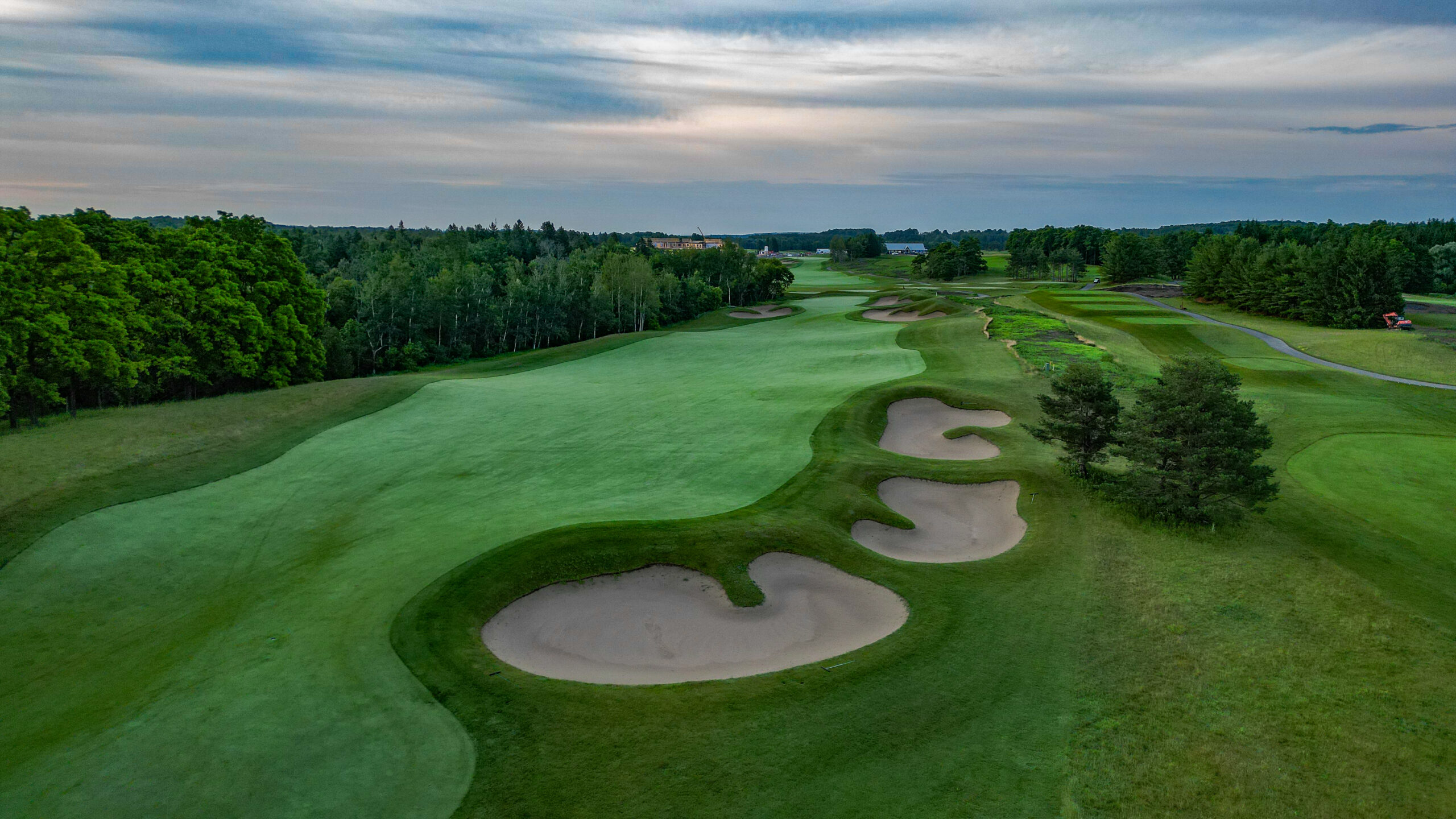
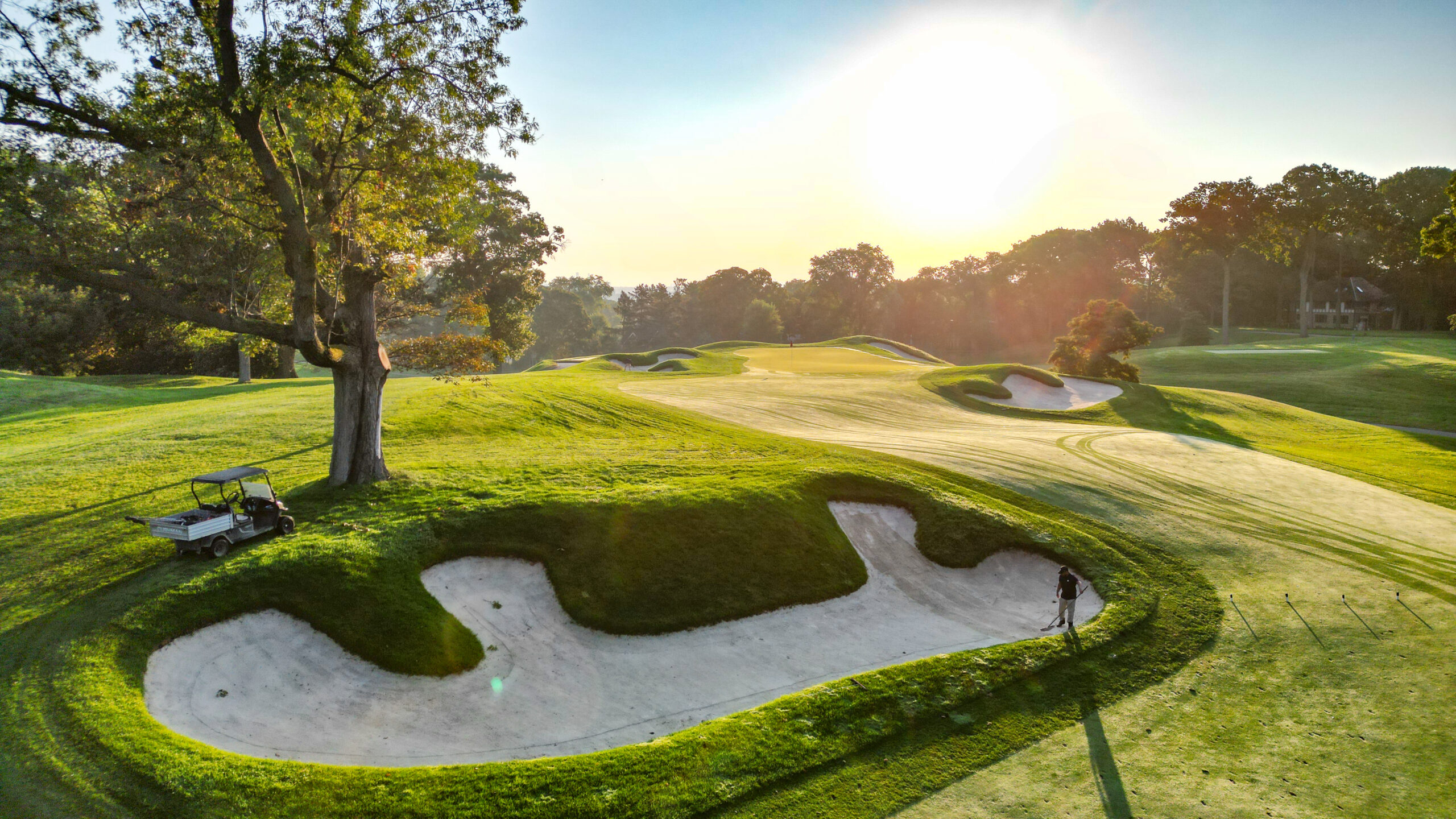

According to Chris Humeniuk, Ian Andrew got the job for his approach to maintaining playability for the average golfer while challenging the best players. Andrew’s resume is impressive: restorations at places lik St. George’s and Cherry Hill, while large overhauls at places like Laval-sur-le-Lac’s Blue course and Maple Downs vaulted by-gone layouts into Canada’s Top 40. Ian Andrew also worked for Doug Carrick on the original construction and design team here nearly 25 years ago, too.
Part I: The Details
So, what actually happened and what did they do? The golf course was only closed for a handful of months—beginning the day after August Long Weekend 2023, and opening alongside the other facilities two courses middle of May 2024. No green complexes were changed, and the routing stayed the same. Fans of the old North will recognize it in its entirety.
The projects main ambitions, as Chris Humeniuk said in the Toronto Star linked above, was to increase difficulty for TOUR-calibre players while mantaining the playability for higher handicap/resort golfers (the facility has plans for stay and play options in the future). This included a large increase in distance to nearly 7,500 yards in total, reducing the 8th and 13th to long par 4’s, narrowing many of the tee shots, and a different bunker scheme across all eighteen holes. As an overarching theme, the main criticism at TPC Toronto’s North course among architecture afficiandos was its mindless width without any reason to play to either side of the fairway for strategic purposes. The green complexes did not really accentuate any of those features or questions asked off the tee or into the greens, either, and often contridicted what you might think is the best strategy. The bunkering, big and beautiful, was often in spots that served as aiming bunkers or top shot bunkers, rather than in the landing areas for players, meaning they served more of a cosmetic feature rather than strategic at times. As a personal opinion, aiming bunkers are a personal favourite feature, but numerous holes—the 1st, 13th, 16th, 17th—had them, and I guess the facility deemed them to be useless in the grand ambitions of Rory McIlroy playing here. Fair play, I could see the argument for one or two holes having them, but four holes, especially when there were more than two bunkers on the 16th and 17th serving that purpose, seemed a bit overkill.
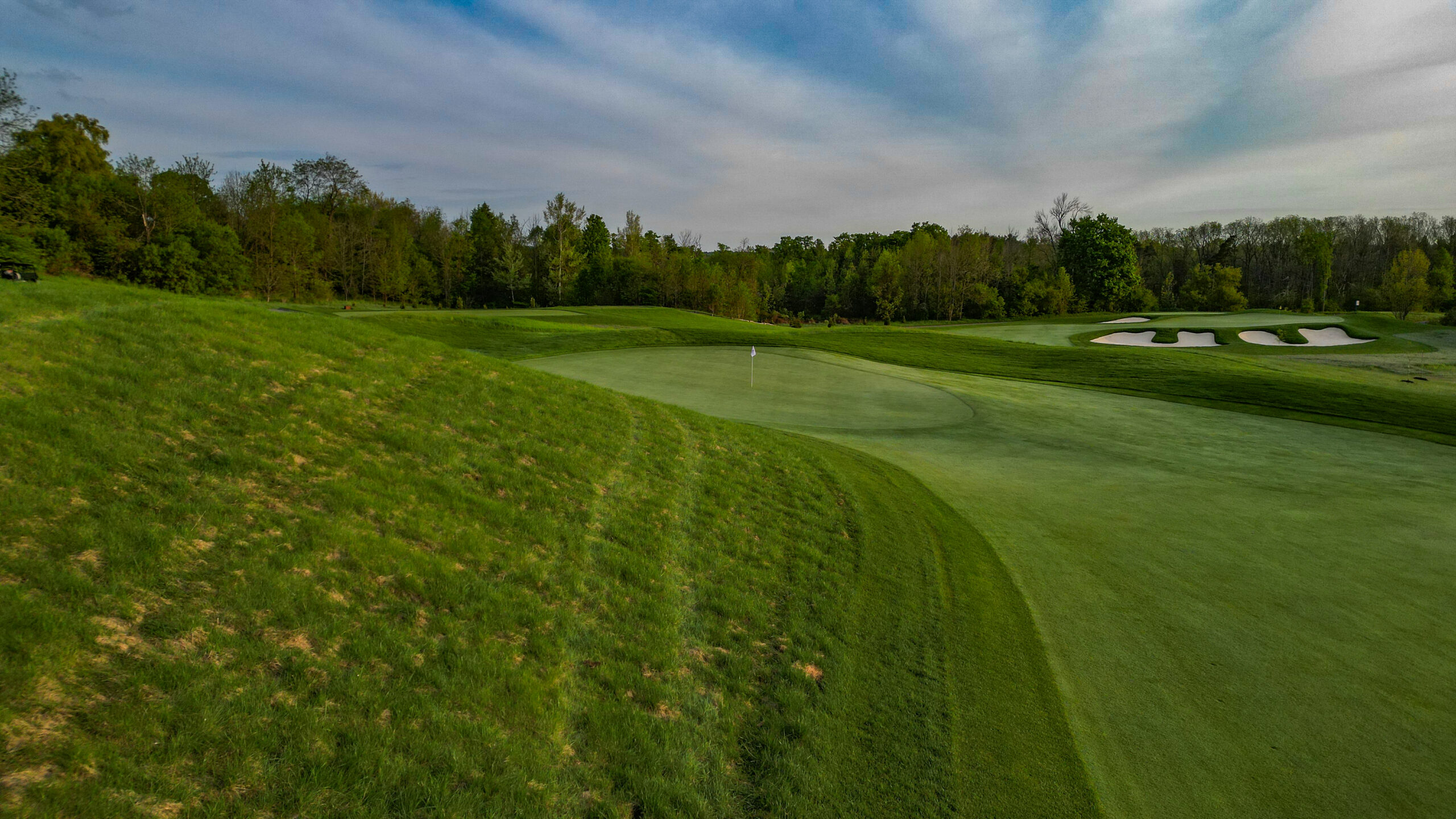
By those ambitions and project goals, they achieved what they were going for. The golf course is, without question, more difficult and longer. In fact, there are now a whopping six par 4’s over 480 yards, including two over 530, and it will comfortably smash Oakdale’s record for the longest golf course to host the Men’s National Open when it hosts in 2025. The routing now oddly begins and ends with the layout’s only two par 5’s, both reachable by todays standards (especially the short 1st), and no reprieve in the middle, though there is one drivable hole at the 5th, and the 12th is a drice-and-pitch, to help break up the slog.
Given the overall motif of hosting events, numerous trees came out as well to make space for corporate hosting, spectators, and general airflow + viewing space. This is, by large, the most successful part of the renovation—no better example than the dramatic improvement of the par 3, 11th, which also moved the tee for the formely awkward 12th down off the hill to allow spectators to be on the high side. This is one of just two examples where holes lost yardage alongside the 13th. The North now has that same spacious feel as before, but opened sightlines have dramatically improved the visual appeal of the golf course, which now has long views across the entire property. For those tree lovers who cry foul at tree management, the 3rd, 7th, 10th, and the 15th-17th still primarily feature trees. It is by no means a barren golf course, but the way the routing jumps between the three parts of the property (south of the road, north of the road, and west of the train tracks) feels much more cohesive and connected as a result, with a unique balance between tighter holes and open space.
For fans of Carrick’s original layout, none of the greens have been changed, and only some minor greenside tweaks have been changed, be it a bunker, a mound, or short grass extensions or additions.
Part II: Hole vs Hole
Given the significance of the work in regards to the grand scheme of Canadian golf and what the future holds for this facility, a hole-by-hole comparison only seems right. On the left, a breakdown of Doug Carrick’s North course, while the right is a breakdown of Ian Andrew’s North course. How should the credit be allocated? It is still very much Carrick’s golf course, with his routing and greens unchanged, so in our mind at Beyond The Contour HQ, this is a Doug Carrick golf course with Ian Andrew renovations, or Doug Carrick and Ian Andrew as you’ll see it in the 2026 Top 100.
Star rating rubric:
One star: A below average hole without much interest or character.
Two star: A hole that lacks excitement, but is largely inoffensive. It just sort of… exists.
Three star: an above average hole with qualities to like & enjoy. This is a quality golf hole worth getting excited about.
Four star: One of the better holes on the golf course.
Five star: a quality hole among the better holes in Canada, it comfortably illustrates brilliant architectural qualities.
Doug Carrick’s North

Hole 1: 542 yards, par 5
A charming introduction to the golf course with a reasonable chance at birdie for some, the dogleg-left tee shot is guided by the top shot-esque bunker complex, which provided a strong visual alignment to begin the round. The green complex is appealing, perched above the surrounds while providing a stern challenge early.
Hole 2: 472 yards, par 4
A sublime long two-shot hole for its simplicity, yet effectiveness, three bunkers etched into the hillside up the left await those eager to cut off yardage. A sea of fairway awaits those who bail away from the bunkers on the right, though this provides perhaps the most difficult approach shot on the entire golf course over a single bunker eating into the hillside short and right in front of the green.
Hole 3: 440 yards, par 4
A rather tame tee shot visually—especially in contrast to the first two—the 3rd hole gently curves around the hillside on the left, while tee shots up the right have to navigate a slew of bunkers on the second shot’s right side working their way up to the green complex.
Hole 4: 158 yards, par 3
A charming short hole, a massive bunker awaits balls coming up short, while a collection area hides from the line of play on the right side awaiting balls drifting. The most difficult pins are the front and far left ones, but regardless, a quality golf hole.
Hole 5: 444 yards, par 4
A spacious introduction to the three holes across the railway (though the only one on the front nine), two bunkers await on higher side right which opens up the better angle into the green complex, though the direct route is actually over the left bunker, easily carry-able for those playing the proper tees.
Hole 6: 350 yards, par 4

A charming short hole benched between a ridge on the right side and the railway up the left, golfers hoping to get closer to the green ought to take the tee shot up the right side, while those laying up or playing conservative up the left will have to negotiate with the greenside bunker.
Hole 7: 214 yards, par 3
A strong par 3 from an elevated tee over a water hazard, the bunkers surrounding the green complex eat a lot of balls up, and only the worst balls end up in the water hazard (or, those hitting a quick hook as the carry becomes longer).
Hole 8: 530 yards, par 5
A rather mundane par 5—especially in contrast to the brilliance demonstrated at the 13th and 18th—it feels as if the 8th is meant to connect the golfer back to the main hub at the 1st/9th/10th/18th.
Hole 9: 432 yards, par 4
A very pleasant end to the front nine, the green complex’s location is among the best on the golf course, benched into the hillside with two beautifully menacing bunkers climbing up the hillside as if it’s the chair lift at a ski hill. Oddly, though, the outside left corner of this gentle dogleg right has a bunker awaiting mishit tee shots, but it does fit in nicely with the three coming off 18, at least.
Hole 10: 416 yards, par 4
A downhill tee shot into the valley, with a pond awaiting long tee shots leaking next to the green, this is among the more graceful holes at the North, featuring no bunkers and feeling as if Carrick just discovered rather than built. The green complex is difficult as well, especially for those bailing left when the pin is right.
Hole 11: 189 yards, par 3
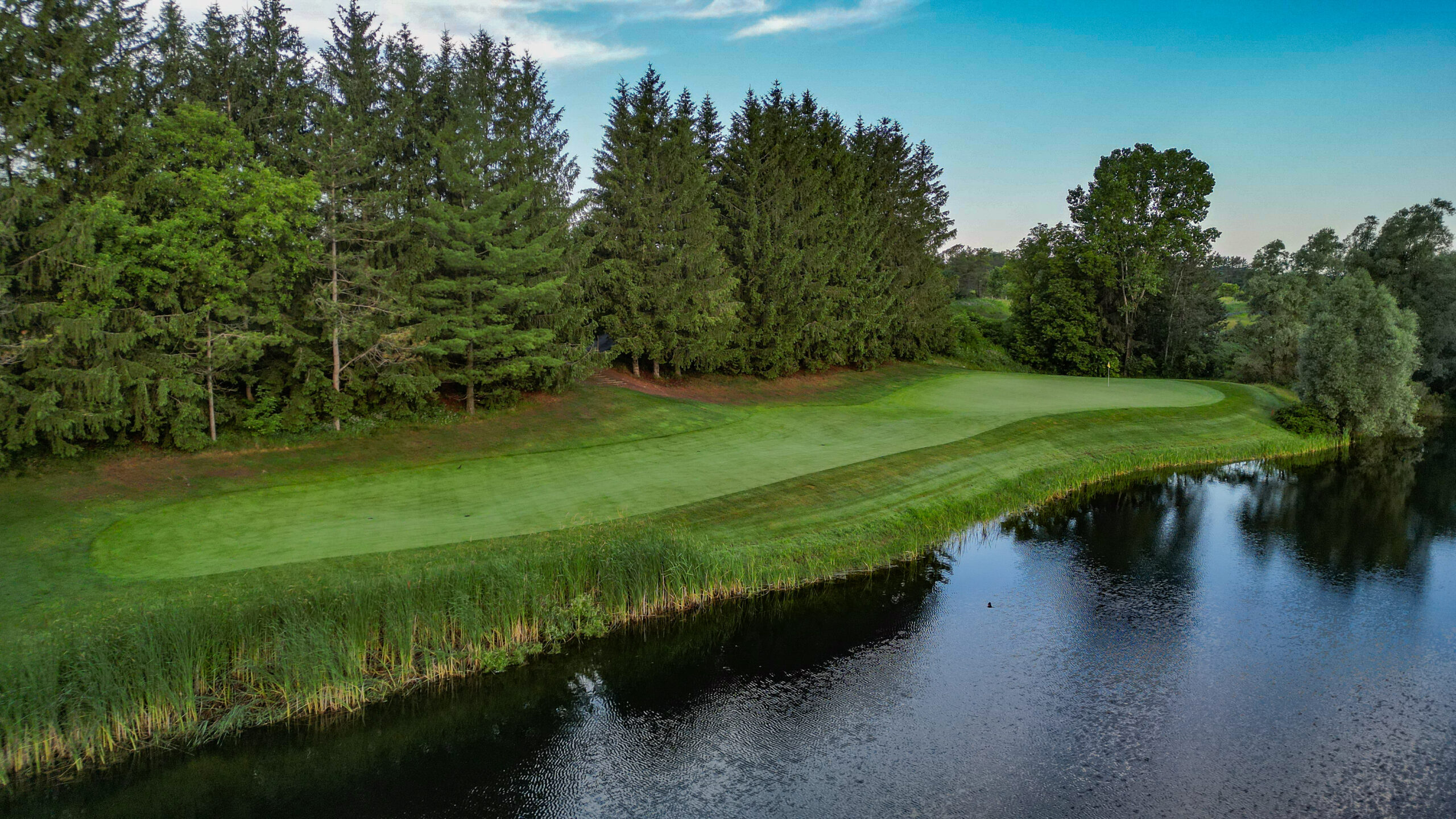
A difficult par 3 with its green benched between the hillside left and a water hazard right, most of the interest comes from the green complex, which heavily tilts towards the water on the right.
Hole 12: 402 yards, par 4
An awkward tee shot after climbing out of the valley following the 11th green, the first swing navigates the hillside where the railway sits on top of up the left and a big bunker awaits the outside corner. The green complex sits gently into that same hillside the golfer falls off of.
Hole 13: 554 yards, par 5
Arguably the finest three-shot hole Doug Carrick built in his 35+ year career (alongside the 5th at Greywolf), the tee shot gently rises over a small ridge before tumbling down to the green complex. The hillside left of the green cuts in front of the left third of the green complex, with a massive slew of bunkers awaiting balls going for the green in two. The best play is out right and pitching back left, but three bunkers in the layup zone await. From a right-handed hanging lie, no shots are more enticing on the golf course than the 2nd and 3rd shots here.
Hole 14: 176 yards, par 3

A charming par 3 with some of Carrick’s finest artistic bunker work, rumours of Ian Andrew being inspired by Royal Melbourne seem to ring true with the style of one-shot hole here.
Hole 15: 386 yards, par 4
An awkward and unusual hole seemingly squeezed into this portion of the property to get the golfer from the sublime 14th and the strong 16th, the 16th is a sharp dogleg right around the corner, with big hitters easily cutting the corner to the point where it could be drivable in favourable wind conditions (at the very least, a short drive/pitch).
Hole 16: 464 yards, par 4
A strong hole playing up and over the ridge that has two aiming bunkers cut into it, a well-struck tee shot will run a mile down the hillside, with the green complex seamlessly benched into the hillside fronted by a massive bunker short left. The green complex, too, features tons of movement.
Hole 17: 440 yards, par 4

An awkward hole gently rising out of the valley pressed against the boundary fence, three bunkers up the right await, but rarely come into play. The green complex, is strong, with a severe tilt to the left coming off the high side to create some interest.
Hole 18: 542 yards, par 5

A sublime finish to the North, a tee shot over the corner with three massive bunkers cut into the hillside tempts those to cut the corner on the inside edge by challenging the bunkers. In doing so, they open the chance to get home in two, but the green complex is fronted by a water hazard and a bunker, and backed by three mean bunkers. A first-rate ending hole, and the second of some of Carrick’s finest three-shot work.
Ian Andrew’s North

Hole 1: 542 yards, par 5
Notable changes include the removal of the first tee shot bunker that most golfers carried, but provided a suitable aiming tool, and the addition of a bunker on the outside corner right—odd choice—to protect the worse angle… I guess? Had they kept both bunkers, the visual might have been rather appealing to begin the round, but alas.
Hole 2: 481 yards, par 4
Once one of Doug Carrick’s finest two-shot holes, any of what make this such a special hole is gone. The visual threat of the bunkers on the inside-left corner of the gentle dogleg left into the hillside is substituted by two uninspired bunkers and one on the low side on the right. Also gone is the greenside bunker on the right, terrifyingly cut into the hillside now replaced with a short grass collection area.
Hole 3: 440 yards, par 4
Never among the most inspired holes on the property, the 4th’s tee shot is roughly the same other than the addition of a very odd tree on the right side of where balls should end up. Three bunkers etching up to the greenside are gone, replaced by a single one.
Hole 4: 158 yards, par 4
Most of the elements of what made this a quality hole in the first place remain, but the bunkers—quite literally copied and pasted as if this was a Photoshop assignment—drop this down a star for me for the lack of artistic vision the original hole once had.
Hole 5: 497 yards, par 4
A big, brawny addition and among the most length added in a single hole on the entire golf course, much of this hole has remained the same. One thing golfers might notice, however, is the width, significantly tightened up and a dramatically harder tee shot than before—especially into the prevailing wind.
Hole 6: 350 yards, par 4
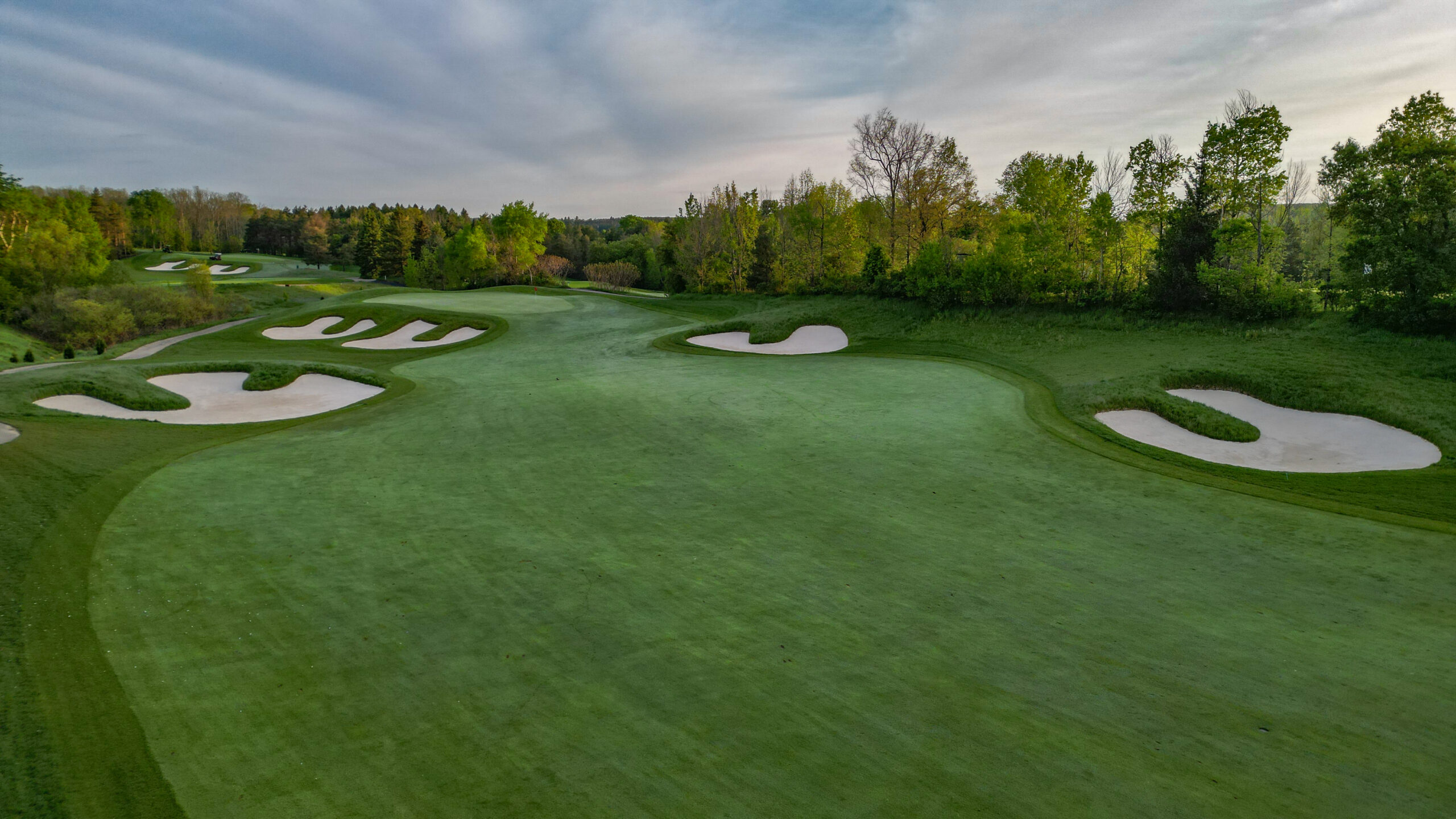
Whether or not the additional bunker up the right side where tee shots could land in makes this a less enticing drivable-ish hole is yet to be seen, but the change doesn’t necessarily impact the quality of this hole, which has always been a compelling short two-shot hole.
Hole 7: 237 yards, par 3
Visually, this hole has dramatically improved and offers a rather intimidating bunker scheme surrounding the green, though much of the hole remains the same and not enough to bump it up a full star. Nonetheless, a quality long par 3!
Hole 8: 530 yards, par 4
The change in bunker styles really affect the visual of the 8th in particular, because the uniformity on a flatter, less inspired piece of ground stands out far more. And, they feel like they’re in the wrong places.
Hole 9: 500 yards, par 4
A whopping 70 yards added to the 9th hole have dramatically increased the difficulty of this single hole by at least a half shot in my opinion. That includes a new bunker on the inside corner to protect the more direct route (thankfully), the removal of the lower-left bunker, and unfortunately, the removal of the second bunker climbing the hillside. Nonetheless, a wonderful hole.
Hole 10: 416 yards, par 4
Not much—if any—has changed on this hole, but one would likely argue nothing needed to substantially change anyway. A minor change to the eye but a large change in how the hole plays is the introduction of short grass next to the green that will no longer hold up balls, and a slightly tighter tee shot.
Hole 11: 225 yards, par 3
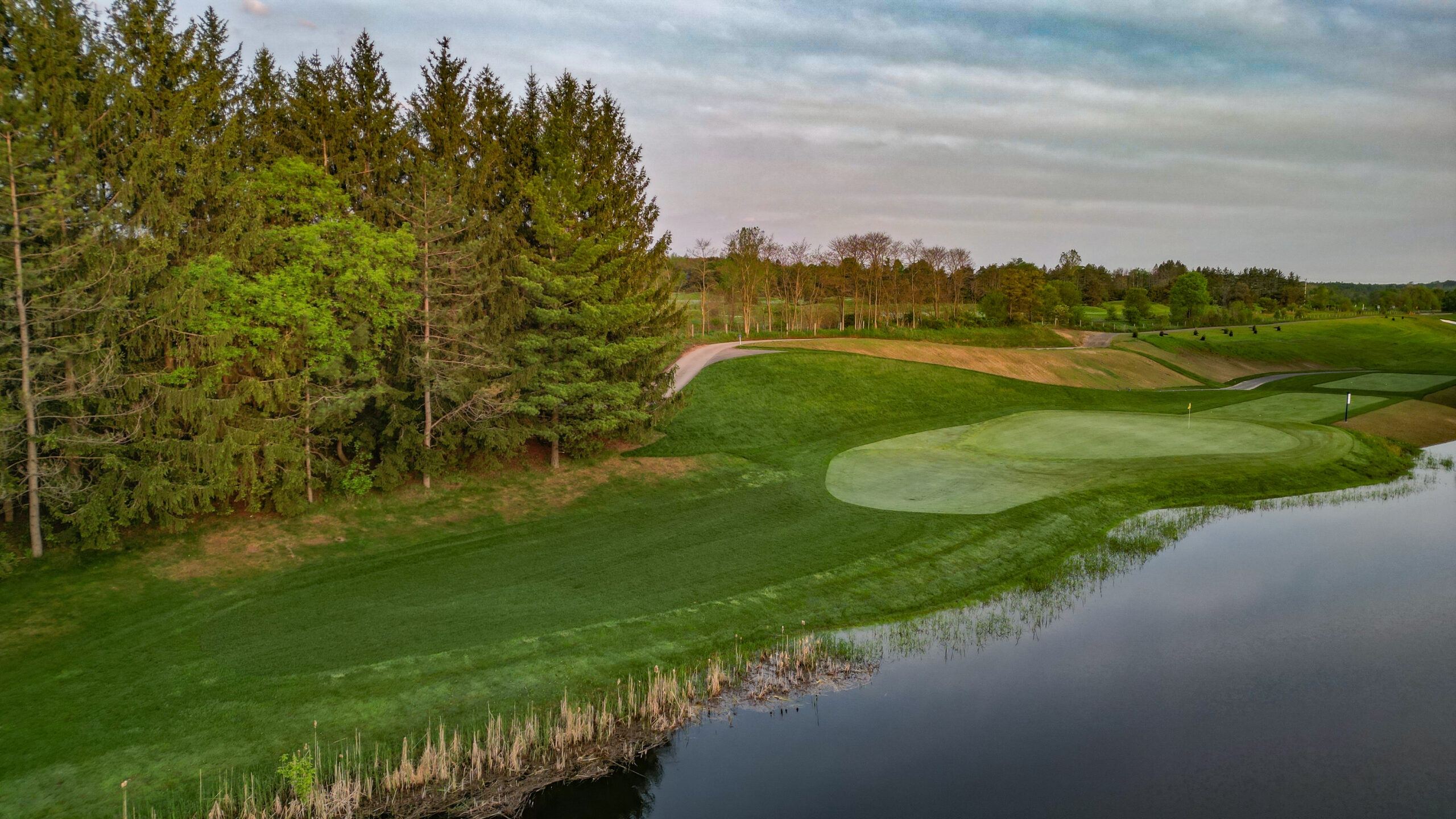
Added length and the removal of the trees up the left—which golfers used to throw balls up into and watch them run down onto the green—means a much harder hole, but significantly improved.
Hole 12: 375 yards, par 4
Among the most dramatic improvements on the entire golf course, Ian Andrew moved the tee box down to the level of the 11th green to create an improved spectator experience up the left. In doing so, the tee shot became less awkward, and the bunkering around the green is brilliant.
Hole 13: 536 yards, par 4
An unusual choice to renovate one of Carrick’s single best holes in his career, though most of what made this hole spectacular remain. That mound short left of the green littered with bunkers is now a grassy hillside seemingly emulating elements of the Dell Hole at Lahinch, and now covers the left half of the surface. Unfortunately, the narrowing of the mowing lines means most golfers play from the same spot and the strategy of playing up the right no longer exists, but it is still a quality (yet brutally difficult) golf hole.
Hole 14: 190 yards, par 3

Minimal changes to this hole insist this is the same, and no doubt, the shot quality remains. But at this point in the round, the redundance of the bunker style becomes annoying and a true eyesore.
Hole 15: 434 yards, par 4
Still among the weakest holes on the North, a new tee across the railway means cutting the corner is less likely and a much more difficult shot in general. Unfortunately, this means the tee shot becomes more awkward playing to the corner of the dogleg, but as a whole, this is a slight improvement.
Hole 16: 513 yards, par 4
The addition of fifty years means those aiming bunkers that once existed now come into play at roughly 275 yards to cover into the prevailing wind. Much of the elements of the hole remain, but this small change means balls that fly the bunker benefit from a large bounce off the high side.
Hole 17: 440 yards, par 4

The 17th remains that awkward hole we knew and (didn’t) love. Those three bunkers up the right are replaced by a single bunker with that all-too-common bunker shape, and the approach’s orientation has shifted slightly, though the overall hole has not changed much in general.
Hole 18: 581 yards, par 5

Much like the 10th and 11th, the fundamentals that made the 18th hole noteworthy in the first place remain, but some minor tweaks and adjustments improve the hole. That includes additional length to bring the bunkers more in play (now, 310 yards are required to carry all of them), and a shaved front edge pressed against the water. The hideous planted trees hold this back from a five star hole.
Part III: Impressions & Overall Thoughts

If you added up the stars above, you would notice they each end up being a three star golf course. In my mind, the layout’s quality has stayed relatively the same, without a massive swing to better or worse.
There are numerous changes I worry Ian Andrew was handcuffed in making by either the facility, the TOUR, Golf Canada, or another outside influence. The TOUR is an overwhelming majority of soft, coddled players, and Ponte Vedra does the coddling. That means uniformity is expected in the golf courses that host, a withdrawl of “quirk”, “funk”, or interesting features that really only Augusta National, the R&A, PGA of America, or the USGA can install into the TOUR’s schedule. As an example unique to TPC Toronto, the top-shot or aiming bunkers are gone in its entirety other than the 13th, and the couplets of bunkers that were, in my opinion, some of Carrick’s most artistic creations are nuked off the layout. They have been replaced with soulless bunkers defined by white sand and a single finger coming back, and if there isn’t a single finger, there might be (maybe!) two fingers. Over the course of the round, it becomes rather mundane and visually dull, without much varience in scale, size, or shape to keep the golfer interested. Makes sense: TOUR venues are largely stripped of such joys that make golf, well, golf, and the North course is comfortably among the finest TOUR venues around now, if that is a thing.
There are some questionable tree planting here, too, and I’m a bit perplexed by this choice in general. I suspect these new trees might cost someone half a shot on average across a four day event, but the 18th is the most notable, which I’d be willing to bet will affect the finish of an event in the near future. The three bunkers cut into the hillside are the main line of play, but those playing left—away from the bunkers—now are handcuffed and forced to layup around a swath of newly planted trees.

This is not something that’s a one-off or a rarity on the new North. The 3rd and 12th’s outside corner have new trees planted to penalize those bailing away from the shortest route to the green (also the high side on both holes), and the new tee on the 16th hole forces golfers to cut it around a tree 40-ish yards in front of the new tee deck off the left side bunker that is roughly 275 yards to carry. The 16th is whatever, but the planting on the 3rd, 12th, and 18th is so odd and unusual that is very clearly stands out as a negative on the new golf course. I can sympathize with Ian Andrew’s dilemma of being asked to defend against par while not being able to change the green complexes, and at the decision’s core, I get why they chose the trees. When I think of some of the best shots in the Canadian Open’s history, it doesn’t come from the golfer being handcuffed to layup and hit a wedge for their third shot on the finishing hole. Imagine if the bunker Tiger Woods hit the crazy second shot into the 18th green at Glen Abbey had a tree on the outside corner, limiting his ability to go for the green in two, and he laid up and flipped a wedge at it instead of his heroic 6 iron over the pond? That shot would have never been possible with three planted trees and thick rough, and some magnificent finishing hole swing from deep rough or a bunker or whatever is not possible from the high side here now.
Credit to the team here and those at TPC Toronto at Osprey Valley, they achieved exactly what they wanted to. There is no doubt in my mind this is a suitable venue for the country’s biggest events from a logistics, operational, and spectator point of view, and with the new clubhouse and improved practice facility, this could reasonably be argued as the single best facility in Canada. It is, in my mind, one of the best tournament venues in the country as well, if not the best. It is not only comfortably in the mix for the longest venue in the country, but the way the layout works and the spacious nature makes this an A+ major sporting venue.
With that being said, this renovation feels like a miss in the grand scheme of golf architecture in Canada. I get it, it was not the main objective to make some architecturally dense, strategically exciting golf course for us at Beyond The Contour or those who enjoy GCA to geek out on (for Ian Andrew’s catalogue, that is Maple Downs or Laval’s Blue course). They achieved their goal, but it feels at the sacrifice of a significant chance for the facility to finally get their heavyweight golf course ripe to be included in the discussion among the country’s best (at the very least, top 20), or perhaps improving the product in general. The North course did not get better or worse, it is simply adjacent to what it once was and sidestepped into a different style of golf course, and that feels like somewhat of a waste. Perhaps the Canadian Open will permanently be at TPC Toronto’s North course and it will all make sense, but even still, that is only 15 days of the year, and golf is so much more than just a stage for the best in the world to come in and shoot -20.

I don’t think this is Ian Andrew’s fault, either. Having seen what he and Mike Weir did at Laval-sur-le-Lac’s Blue course, which also had ambitions of hosting the Canadian Open, he clearly has the ability to toy the line between architecturally interesting, challenging, and playable for all. If I had to guess, his hands were tied behind his back with too many stipulations and directions, and the inability to change the green complexes hurts any chance of dramatically improving the layout. Sure, we can blame the bunker style on him, which is uneventual and lacks any sort of identity or character, and the green complexes and the lack of interest rest on the shoulders of Doug Carrick and Carrick solely. The project’s shortcomings itself are more a lack of vision and creativity rather than execution: if this golf course opened in 2024 with no 23-year history attached to it, nobody would say it’s bad—it’s more having seen what Carrick did, and what a more talented architect could do on this beautiful piece of ground leaves one wondering.
Comparing and contrasting this against something like Memorial Park from Tom Doak and Brooks Koepka, which hosts the Houston Open every year on the PGA TOUR and puts up a very strong fight relative to par (averaging -12.75 under since the event moved to Doak’s North American contributions to the TOUR schedule), it feels like TPC Toronto prioritized the wrong things with “defence against par.” Memorial Park’s ability to hold up relative to par rests solely on the green complexes and their awkward greenside shots, not a new bunker scheme and additional length. Talking to Corey Conners ahead of the 2022 RBC Canadian Open, he said the only way to challenge players at the TOUR level is firmness and awkward shots, whether that be an uneven lie, a touchy shot, or a weird green complex. Yet, the awkward shots are nowhere to be found here, and the green complexes remain vanilla and uneventful.
Part IV: Looking Ahead + 2025 Canadian Open

Moving forward, expect to see a lot of “TPC Toronto at Osprey Valley (North)” across Golf Canada’s Championship schedule—a lot. That includes the 2025 Canadian Open and its first time hosting the event at this facility, and more than likely a semi-permanent to frequent addition to the rota following Oakdale’s redux. Could we see a Women’s Open here, too? If any facility could pull a 2014 US Open/US Women’s Open at Pinehurst No. 2, it would be here, though I think the Heathlands is much better suited for the Women’s game (note: that would be very, very awesome to see the Men and Women on the same facility on the same week or back-to-back weeks). The fact of the matter is, this golf course is tailor made for the Men’s game, somewhat oddly ignoring the prospect of a rollback coming in 2026. Nonetheless, it is, in my mind, a very suitable venue from the corporate/hospitality/logistics perspective, and the new clubhouse and practice facility is downright epic.
For championships, those familar with the North will notice some slight changes to the routing. Not quite of the Heathlands-level frankenstiening where there are legitmately 4 routings (starting on the 2nd hole, starting on the 1st, starting on the 11th, and the back nine switch for the 13th to be the 18th), the proposed championship routing includes the switch of the 8th and 17th holes, easily switch-able due to the 9th and 18th being next to each other. The 2nd hole is sandwiched between the brawny 8th and the awkward 17th, and the walk from the 7th to the 17th is a bit long, but whatever: for the championship, this means a stronger (much stronger) finishing stretch with the 13th-18th providing a compelling end, so it makes sense.
Everything seems geared up for TPC Toronto’s North course to become a Glen Abbey-esque figurehead in Canadian golf—only Hamilton and St. George’s likely have the chance to switch that, but perhaps rumours of the National Golf Club of Canada looking to allow women members means that could be a suitable venue every-so-often, too? Nonetheless, the 2025 Canadiain Open will be Canada’s introduction to the new home of Canadian Golf.
Conclusion

With all that said—all the critiques and praises and changes—TPC Toronto’s dynamic is now excellent. It was always sort of this way, with the Heathlands being the OG low-key layout that architecture nerds got to geek out on, the Hoot being the best for resort play and beauty, and the North being the Tour venue. Now, that motif is multiplied to the max. The question of “which golf course would you play if you only had one round?” got a lot more difficult, especially with the addition of TPC Toronto to the Canadian Open rota.
For now, though, it remains comfortably the 3rd best golf course at the facility, and I don’t see that changing anytime soon. In doing so, it has also quickly vaulted itself into one of the better tournament courses in the nation, embracing that “TPC” (Tournament Players Club) moniker and really embracing its role in the grand scheme of Canadian Golf.









